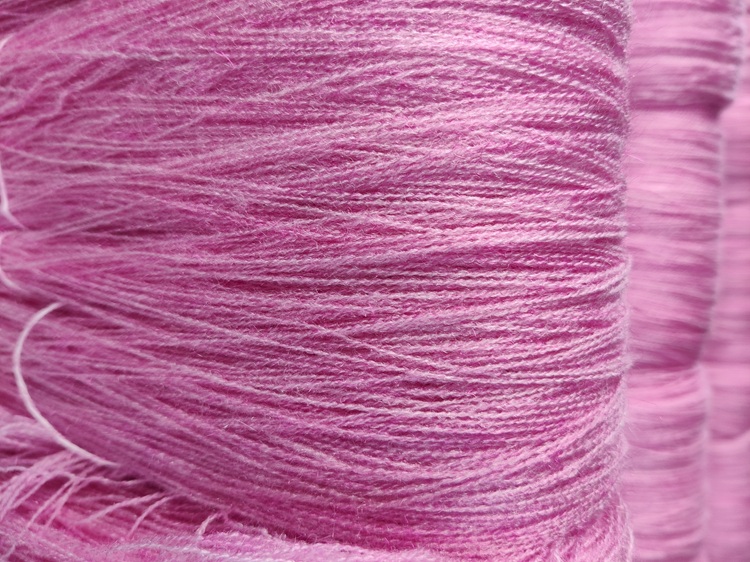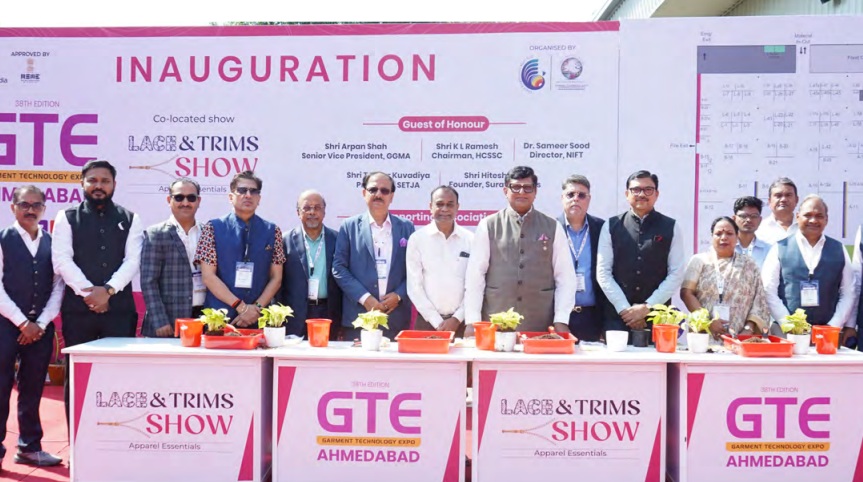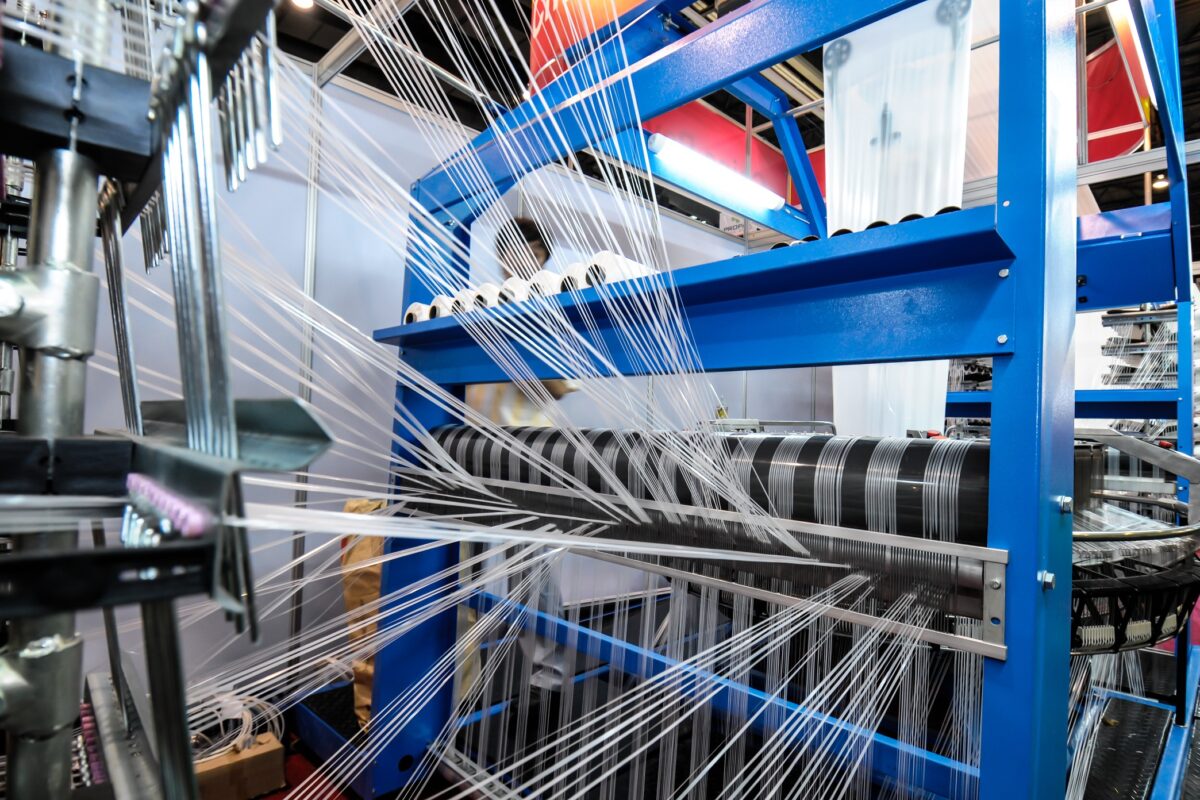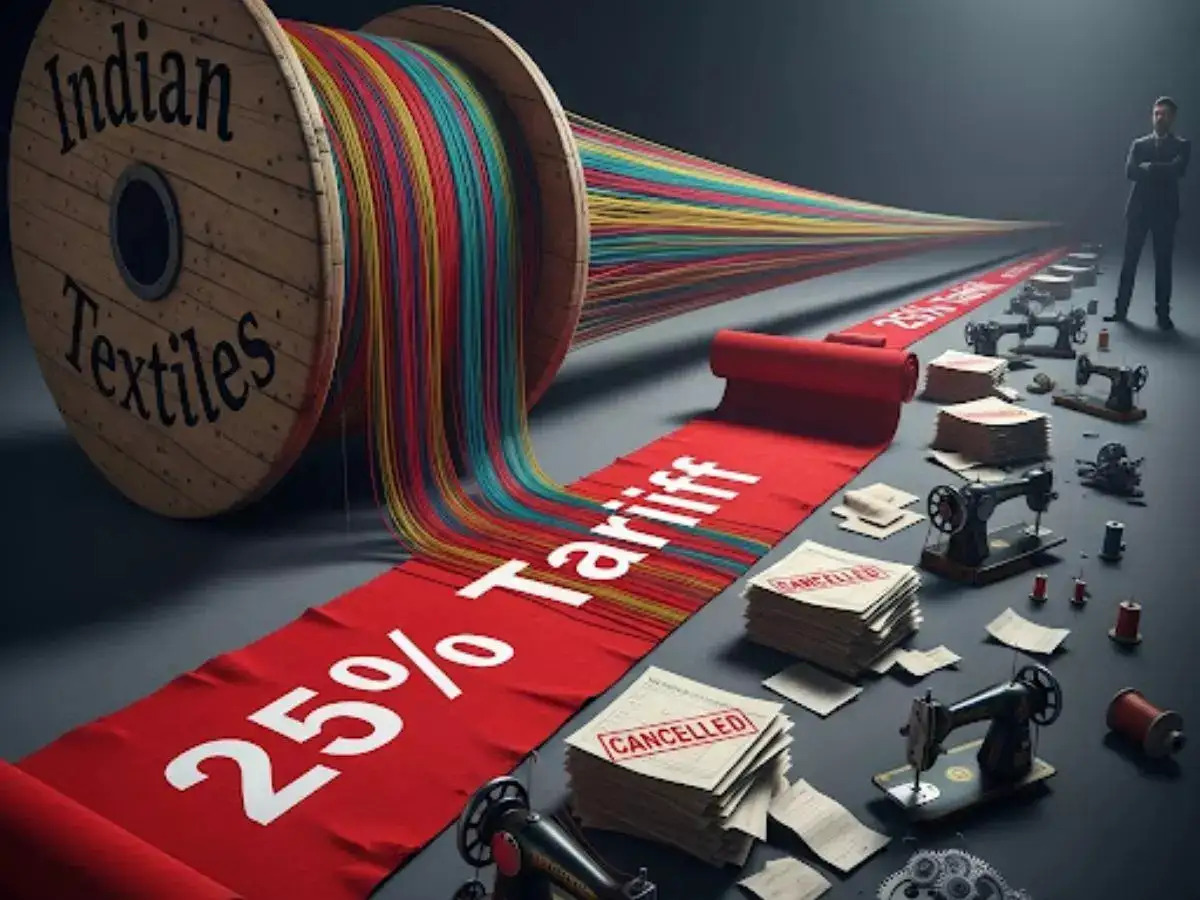FW
Ashok G Rajani has been elected as the new Chairman of Apparel Export Promotion Council (AEPC), by the Executive Committee of AEPC, for a term of two years. He is associated with AEPC since 1978 and has been on the board of AEPC since 1994. He was the senior vice chairman of AEPC and chairman (export promotion) at the industry body during 2000- 2001, 2006- 2007 and 2010- 2011.
Rajani is the Founder and Chairman of Midas Touch Exports, a leading manufacturer and exporter of readymade garments from India. He controls the management of all the Midas Touch Group of Companies. He is also actively associated with the various garment and textiles organisations and was on the board of Alok industries - one of the largest integrated textiles company in India. Currently, he is trustee of the Clothing Manufacturers Association of India (CMAI), Governor on the board of Institute of Apparel Management (IAM) and Apparel Training and Design Centre (ATDC). Earlier he has served as the president of the CMAI and board of governors of the National Institute of Fashion Technology (NIFT).
Rajani pioneered and led Midas Touch to become one of the most prestigious garment manufacturing companies in India. Dealing in both woven and knitted garments, the company mainly exports to USA, EU, UK, Portugal and Turkey. He has also been instrumental in providing impetus to the garment exports from the country over the last four decades.
www.aepcindia.com
Yarns, Fabrics and Accessories (YFA) Trade Show 2015, which was held over four days from December 14 to 17, 2015 at the NSIC Exhibition Centre in New Delhi received an overwhelming response with over 7,477 buyers expressing satisfaction over display of innovative and value-added fibres, yarns, fabrics and garment accessories.
The fair was inaugurated by Textile Minister, Santosh Kumar Gangwar, who said that the YFA Trade Show has done a great job by bringing entire textile value chain under one roof and this fair will be very helpful in growing of textile sector in this part of the country.
The impressive list of Indian and global textile industry exhibitors included Reliance Industries, Indorama Synthetics, Asahi Kasei fibres, Amarjothi Spinning Mills, TT Ltd, Madeira India, Garden Silk Mills, among many others. These companies exhibited and a few launched the innovative and latest developments in value-added textile products like specialty fibres, multifunctional yarns, mélange yarns, spandex yarn, embroidery yarn, bamboo fabrics, modal fabrics, metal garment accessories and various other garment accessories.
Visitors included decision makers like sourcing heads, purchase managers, merchandisers, sales heads and country managers as well as composite mills, spinning mills, knitters, weavers, yarn agents, importers, exporters, buying houses, designers and retail chains.
www.yfatradeshow.com
As per the available estimates, while US cotton producers won’t put a limit to the number of acres planted in 2016, they seem to be increasing their cotton acreage in the coming season. Following a year in which they planted only 8.5 million acres of cotton – the lowest total since 1983 – they plan to increase cotton acreage by over 5 per cent in 2016. American cotton producers have indicated they will plant 9,085,000 acres of cotton in 2016, according to the annual Cotton Grower Acreage Survey.
While it does represent a higher total than what was planted in 2015, this projection would still represent the second smallest yearly acreage total dating back to 1983. If American growers do plant the projected 9.085 million acres, it would represent an over 30 per cent reduction in acreage from five years ago, when American cotton farmers planted 14.735 million acres of cotton in 2011, according to USDA data.
As always, the price of cotton in the commodity markets remains the single most significant factor in driving acreage totals. Prices have remained stagnant, hovering near the mid-60 cent trading range for much of the last calendar year, and many project that pattern to hold true for the foreseeable future. This has not encouraged new additions to cotton acreage in the US, although several other factors have helped cottonʼs cause, according to responses gathered in the Cotton Grower Acreage Survey.
Survey indicates that Texas will lead the way in 2016 acreage with a projected total – 5.216 million acres – that would represent nearly 60 per cent of total US acreage. The biggest factor in cotton acreage is price. It was the most frequently referenced reason survey respondents gave when determining their acreage projections. Respondents in Georgia, traditionally the state with the second largest cotton acreage totals, indicated their planting patterns will remain largely unchanged. The Cotton Grower Acreage Survey concludes that American cotton producers are impacted by the commodity market fluctuations as well as industry developments.
www.cottongrower.com
The government of Maharashtra has announced capital subsidy for the upcoming self-financed projects in the state and special subsidy for the textiles units in North Maharashtra, Marathwada and Vidarbha.
As per the government GR No. 2015/151/Tex-5, capital subsidy will be provided under new textile policy 2011-17 to the self-financing textile project, wherein the spinning mills, cotton ginning, processing and printing units will be given 35 per cent capital subsidy, technical textiles and composite units will be given 30 per cent capital subsidy, and power loom and other textile related units will be given 25 per cent. The government resolution further said that the upcoming textile units in North Maharashtra, Marathwada and Vidarbha can avail additional subsidy of 10 per cent.
“Additional subsidy of 10 per cent is announced for these regions as they are cotton growing areas and establishment of new units in these areas will help the industry and in generating employment”, the GR said, adding, the government will provide the capital subsidy in above listed sector for the machineries which fulfill the Technology Upgradation Fund Scheme (TUFS) criteria of the central government.
Meghalaya is set to introduce “geo-textile and geo-cell” technology for construction of roads, besides also undertaking erosion and flood control embankments in the state under the initiative of National Textile Corporation Limited (NTCL), a Government of India Undertaking.
Geo-textiles are technical textiles used for the purpose of geo-technical application like road and railway, reinforced steep slopes, walls, landfills, brownfields, coastline protections, tunneling, sinkholes, granular columns, among others. NTCL officials recently visited a site for the pilot project at Ballonggre, near Tura. NTCL Director (marketing) Aloke Banerjee gave a presentation to Chief Minister Mukul Sangma, which was also attended by PWD officials and DC-in-charge Dikki D Shira.
He spoke about how the geo-textile technology can improve the stability of the soil, which would increase the viability and strength of the road. The government has also decided to explore possibilities of using the technology for strengthening embankment along the Jinjiram river in plain belt areas of West Garo Hills, which is prone to flood. The company will also provide technology for sloping along the roads, which are prone to landslide by using “geo-cell” technology.
Ntcltd.co.in
Leading international sourcing show on yarns, apparel fabric, denim fabric and clothing accessories –Intex South Asia successfully concluded at the Sri Lanka Exhibition & Convention Centre, Colombo, Sri Lanka, on November 16 and 17, 2015.
The exhibition witnessed 123 exhibitors from 11 countries showcase latest innovations from Sri Lanka, India, Singapore, Hong Kong, Thailand, Taiwan, China, Indonesia, Pakistan, Bangladesh and Korea. Special exclusive areas like the ‘Yarns & Fibres Zone’; ‘Denim World’ and ‘Accessories World’ allowed the exhibitors display their specific ranges and enthused the visitors since they could directly connect with the manufacturer of categories they were looking for. The ‘Trends Zone’ showcased the forthcoming Spring/Summer 2016 collections.
Buyers from 13 countries including India, Sri Lanka, China, Pakistan, Hong Kong, Bangladesh, Korea, Malaysia, Thailand, Germany, South Africa, UK and Russia visited the fair. Top buyers visiting Intex were Brandix, Hiradamani, MAS Holding, Next UK, Gap USA, Speedo, Decathlon, Max, Intraport UK, Columbia Sportswear, New Universe UK, Styku USA, Etam Sri Lanka,Arugam-Bay Sri Lanka, Eskimo, George UK and Eskimo, among others.
\The exhibition was inaugurated by Sujeewa Senasinghe, State Minister of Development Strategies & International Trade in the presence of Arindam Bagchi, Deputy High Commissioner of India and Indira Malwatte, Chairperson & Chief Executive, EDB.
www.intexfair.com
India's textile exports are getting affected on account of the US legislation for federal procurement, which stipulates sourcing of raw materials from the designated countries or domestic suppliers, Ficci said. The industry body has submitted a representation to resolve this issue to the Ministry of Textiles and Ministry of Commerce & Industry.
"Ficci has requested the Government of India to take up the issue either bilaterally or multilaterally with the US government to resolve the issue amicably," it stated. Indian textile exporters have said that the buyers or companies based in the US supplying to their government departments and agencies have stopped sourcing raw materials from countries like India, since the country is not a part of the General Services Administration (GSA) Schedule Contract.
The GSA is responsible for supporting several federal agencies in the US with basic functions, including procurement services. The Buy American Act, the US federal acquisition process is based on preferential treatment of US-made products. Manufacturers are considered as US products if manufactured domestically and the cost of local components is more than 50 per cent of the overall cost of all components.
Under certain conditions however, the Buy American Act may be waived. The Trade Agreements Act of 1979 (TAA) gives the President authority to waive Buy American Act requirements for certain procurements. So far it has been waived for eligible products in acquisitions covered by the WTO Government Procurement Agreement, some relevant free trade agreements (FTA), as well as for least-developed countries. As per the TAA, all products listed on the GSA Schedule Contract be manufactured or "substantially transformed" in a "designated country".
The designated countries, as per the GSA Schedule, consist of World Trade Organization Government Procurement Agreement Countries, Countries having Free Trade Agreement with the US, Least Developed Countries and Countries based in the Caribbean-Basin. And India does not fit into any of the mentioned criteria prohibiting American companies from sourcing from the country.
www.ficci.com
Most of the apparel exports from Bangladesh depend upon five limited products and lack of new initiatives is putting a question mark on the country’s export competitiveness in the global market. Industry experts are sceptical about the sustainability of exports in future.
Currently, more than 78 per cent of the sector's earnings come from shipment of only five items namely shirt, trouser, jacket, T-shirt and sweater though Bangladesh exports more than 30 types of products. The country reported $25.49 billion from knit and woven exports in fiscal year 2014-15 while only five items contributed $20.04 billion, according to data of the Export Promotion Bureau and the Bangladesh Garment Manufacturers and Exporters Association (BGMEA).
The total export earnings stood at $31.198 billion in last fiscal while garment accounted for 81.71 per cent of the total, according to data. Overseas sales of local garment products are also mainly limited to four major destinations-the EU, US, Canada and Japan.
Industry experts are of the opinion that the sector’s dependency over cotton-based products and lack of effective efforts for product diversification and new market exploration as well as shortage of specialised skilled workforce, poor infrastructure and entrepreneurs' unwillingness to take risk are some of the factors responsible for the limited product exports.
The experts seek government's policy support to change the entire export scenario, including opening of new missions, branding of local products, and cash support for potential sectors.
The Ministry of Textiles has raised concerns over an Environment Ministry's proposal to mandate almost all the textile units to reduce their effluent discharge to zero. Outgoing Textiles Secretary, S K Panda has written a letter to the ministry saying that the proposed standards are "too stringent" and it may lead to several textile units closing their operations.
The proposed standards by the Environment Ministry seeks to lay down zero liquid discharge for textile processing units where water discharge is greater than 25 KLD per day. Panda has said in his letter that the domestic processing industry is largely unorganised and consists of small and medium units and the proposed norms are stringent in terms of capital investment and it would also have high recurring expenditure. He has asked the ministry to implement norms in a phased manner.
The Textiles Ministry has held several meetings with the industry representatives, textile research associations and Indian Institute of Technology on the issue and a committee has been formed to study the existing technologies of effluent treatment. Panda said that in the short-term best available technology can be introduced and for the long-term R&D would be pursued for developing cleaner and more cost effective options.
Texmin.nic.in
Since the existing four-year wage agreement is about to end in January, various textile associations in the knitwear town of Tirupur have decided to hold joint negotiations with the labour unions to fix revised monthly wages.
Till now, South India Hosiery Manufacturers’ Association (SIHMA) and a few other associations were jointly signing a wage pact with labour unions and Tirupur Exporters’ Association (TEA) along with a few other associations used to sign a separate agreement. However, now all these associations plan to ink a joint wage pact to negotiate with the labour unions in a better way and also to bring equality in the wage scales across the sector.
A preliminary meeting of representatives of SIHMA, Tirupur Exporters’ Association and four other associations was organised recently to explore the possibilities. These associations have also asked leading trade unions such as CITU, AITUC, MLF, LPF, ATP and INTUC to come up with a joint set of demands before beginning the actual wage revision talks.
Trade unions on the other hand are looking forward to a considerable rise in monthly wages along with other benefits like house rent and medical allowance.
www.tea-india.org












